
Station Name: BRITANNIA[Source:
Alan Young]
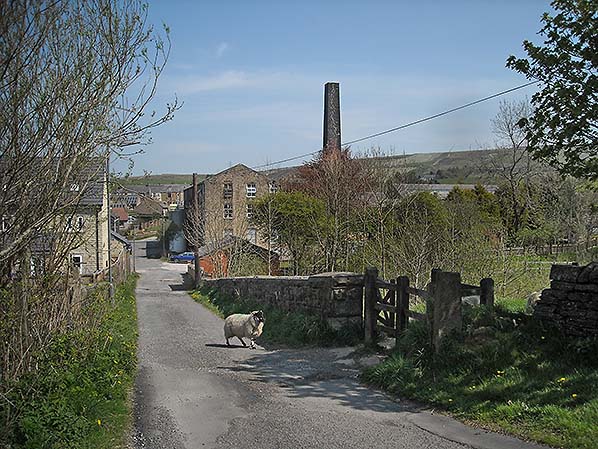
Looking north down Deansgreave Road, Britannia, towards New Line. The sheep is standing beside the eastern parapet of the bridge over the former Rochdale – Bacup railway. The tall stone building and chimneystack are Britannia Mill (otherwise known as Brandwood Mill) built c1840 to spin and weave cotton. Most Lancashire mills are either converted to other uses or demolished, but this one has continued as home to a textiles firm: the Lancashire Sock Company. The photo was
taken in May 2016. Photo by Alan Young
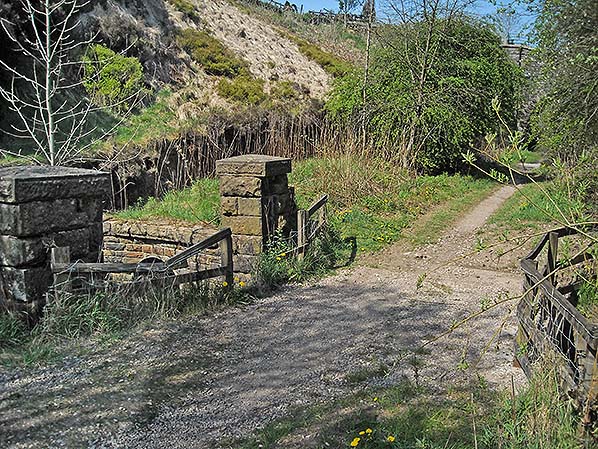
On the section of the Facit Branch between Deansgreave Bridge, Britannia, and the Lee Colliery Incline bridge a culverted stream emerges from the almost-vertical cutting to the north to join a stream which shares the cutting with the railway trackbed. The old stonework is still in place. The incline bridge is in the background in this view, looking west, in May 2016.
Photo by Alan Young
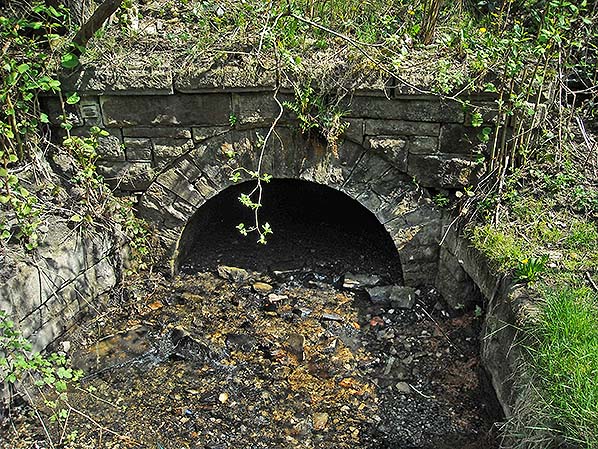
On the section of the Facit Branch between Deansgreave Bridge, Britannia, and the Lee Colliery incline bridge a culverted stream, seen here, emerges from the almost-vertical cutting to the north to join a stream which shares the cutting with the railway trackbed. The photo was taken in May 2016.
Photo by Alan Young
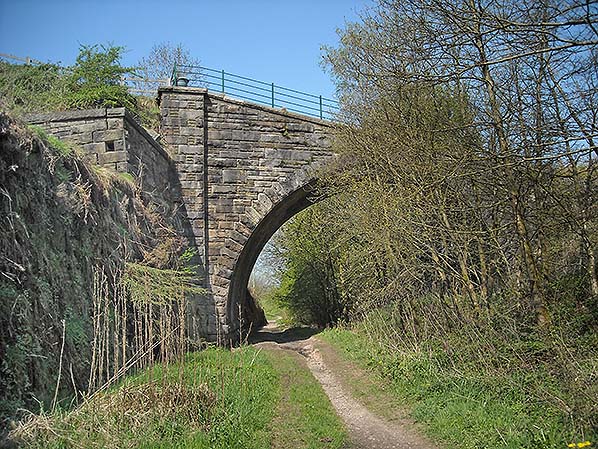
Lee (or Lee Moor) Colliery operated on the edge of the moors between Britannia and Bacup until 1906. An incline (extremely steep railway) connected this colliery to Maden’s Colliery on the road called New Line. The incline crossed the Rochdale – Bacup railway on this noticeably asymmetrical stone bridge close to the point where the railway passed under New Line. This view from May 2016 is looking west along the old railway trackbed between Britannia and Bacup, now used as a footpath.
Photo by Alan Young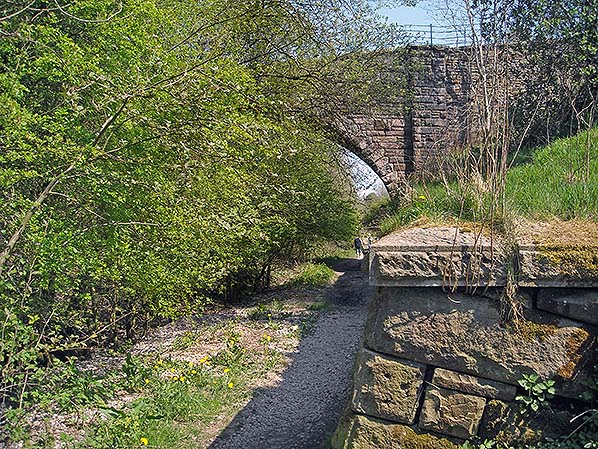
Lee (or Lee Moor) Colliery incline bridge over the Rochdale – Bacup railway, looking east in May 2016. Note the stone retaining wall in the foreground.
Photo by Alan Young
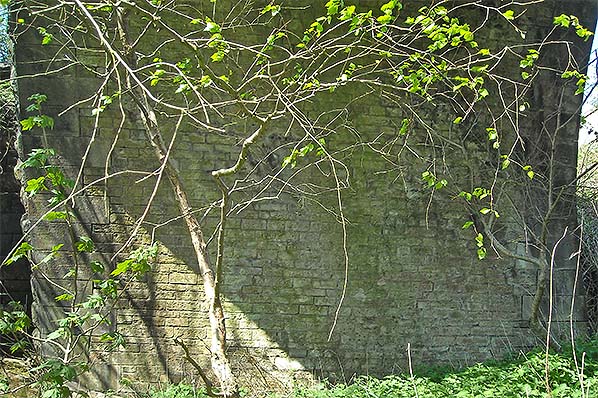
Lee (or Lee Moor) Colliery operated on the edge of the moors between Britannia and Bacup until 1906. An incline (extremely steep railway) connected this colliery to Maden’s Colliery on the road called New Line. The incline crossed the Rochdale – Bacup railway on this noticeably asymmetrical stone bridge close to the point where the railway passed under New Line. The underside of the arch shows ‘skewed’ stonework, its courses laid with a noticeable slope down to the east. This photo was taken in May 2016.
Photo by Alan Young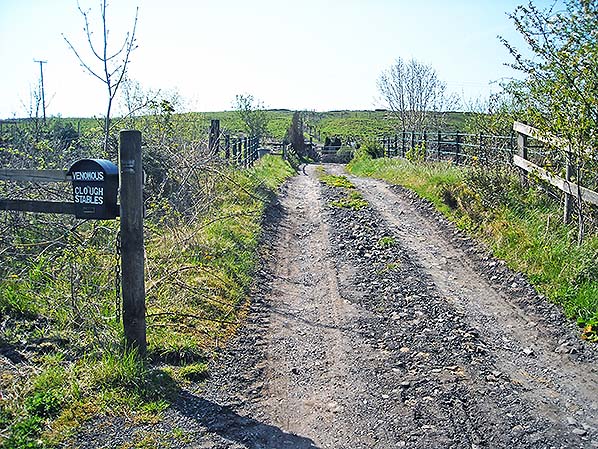
Looking south up the course of Lee (or Lee Moor) Colliery incline from a point near the road known as New Line. The former Rochdale – Bacup railway passed under the incline at the point in the foreground where the lane becomes less steep. This photo was taken in May 2016.
Photo by Alan Young
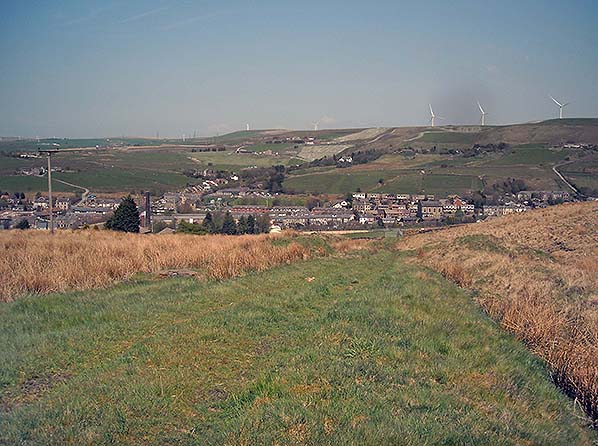
Looking north-east in May 2016 down the course of the standard gauge mineral railway from Britannia Quarries, on the moor top, to Britannia station on the Rochdale – Bacup railway. Straight ahead on the valley floor is the former Beulah Methodist Church, with the chimneystack of Britannia Mill to the left: both are useful points of reference on the old photos of Britannia station. This mineral railway went out of use shortly before, or during, World War 2. The moorlands in the vicinity of Bacup and Rochdale have been invaded by wind turbines during the last twenty years, some of which are visible in the distance.
Photo by Alan Young
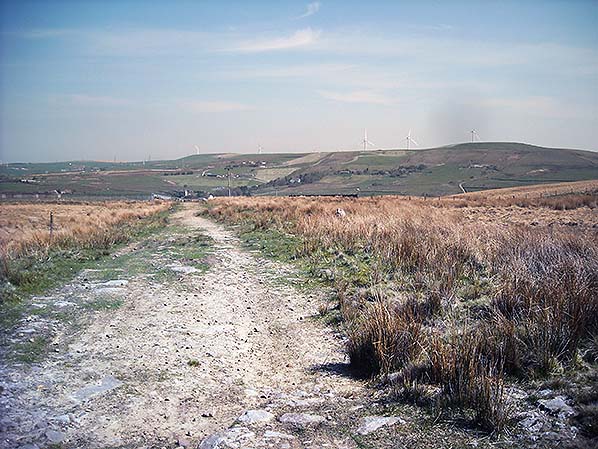
This view from May 2016 is looking north-east down the course of the mineral line that conveyed stone from Britannia Quarries on the moor top, to Britannia station on the Rochdale – Bacup railway. This stretch of the old mineral line’s trackbed is now a public footpath; where it disappears from view, the gradient steepens markedly and the footpath leaves the trackbed, and veers to the left.
Photo by Alan Young 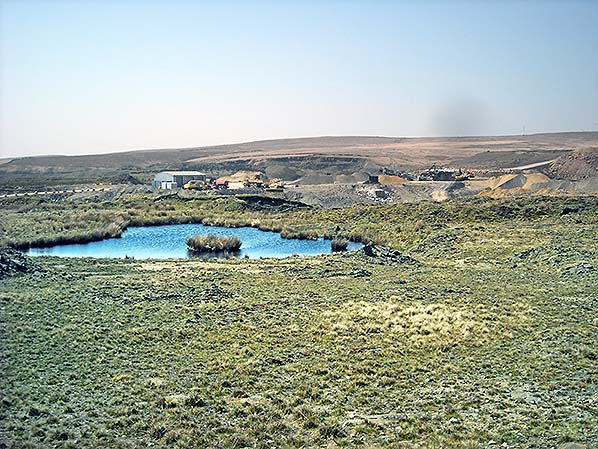
Britannia Quarries, on the moors above the Rochdale – Bacup railway in May 2016. These quarries have recently been revived, but there is no railway now by which to dispatch the stone.
Photo by Alan Young
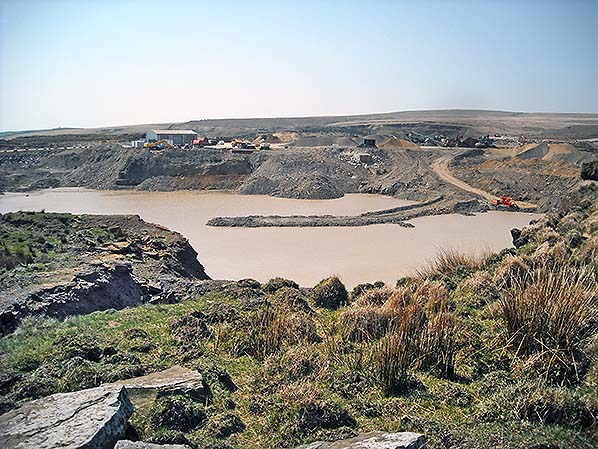
After many years of minimal activity, Britannia Quarries are busy once more. Since 2010 they have been operated by Fairhurst Stone Merchants. Recent quarrying activity has created the lake in the middle distance, seen in May 2016.
Photo by Alan Young
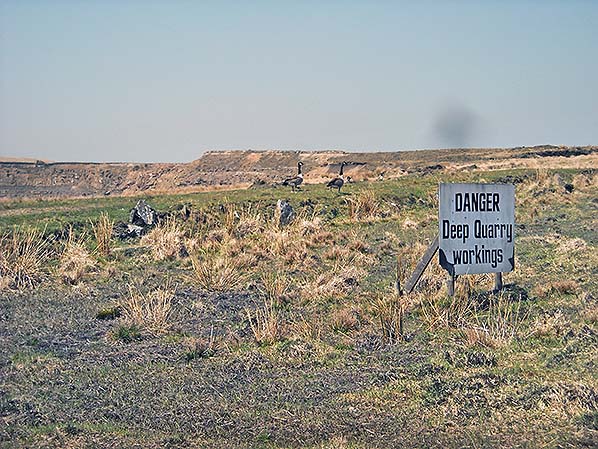
In May 2016 some Canada Geese are taking a leisurely stroll on the former trackbed of a moorland mineral line that connected Britannia and Lee quarries. They seem oblivious to the message on the sign: but they can fly.
Photo by Alan Young
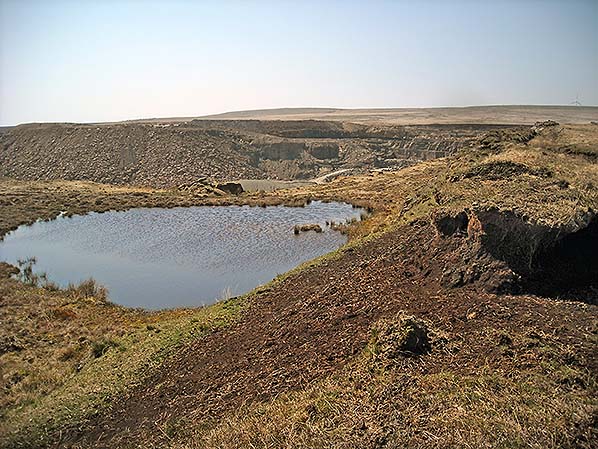
Part of the Britannia Quarries complex on the moors above the former Rochdale – Bacup railway is seen in May 2016.
Photo by Alan Young
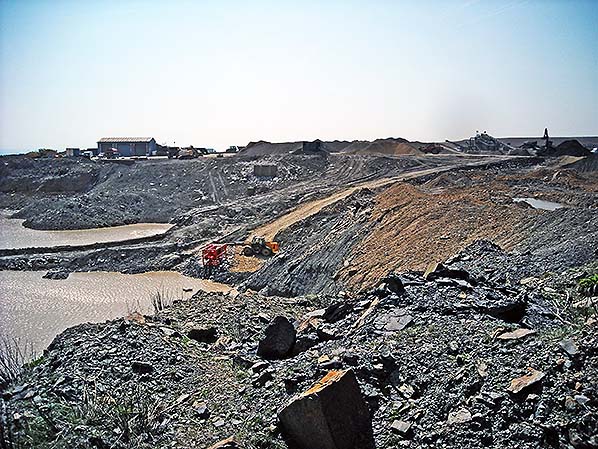
Part of the Britannia Quarries complex on the moors above the former Rochdale – Bacup railway is seen in May 2016.
Photo by Alan Young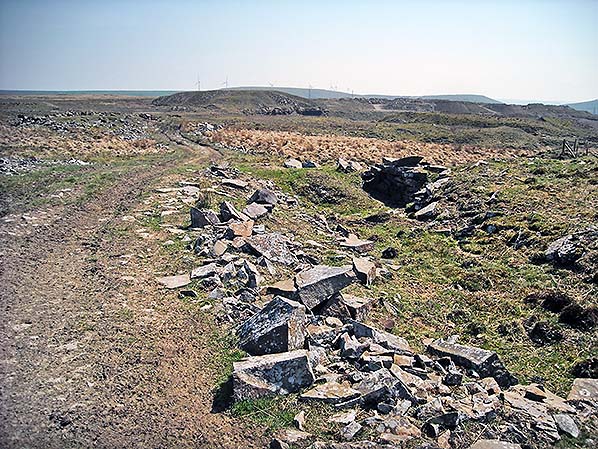
Looking south-east on the moor top near Britannia in May 2016. In the nineteenth century several small coal pits were worked close to the standard gauge mineral line from Britannia Quarries to Britannia station on the Rochdale – Bacup railway; the piles of rock in the foreground and middle distance are thought to show the sites of some of these old workings. Part of the revived Britannia Quarries is seen in the distance, with representatives of the steadily increasing population of wind turbines
on the skyline. Photo by Alan Young
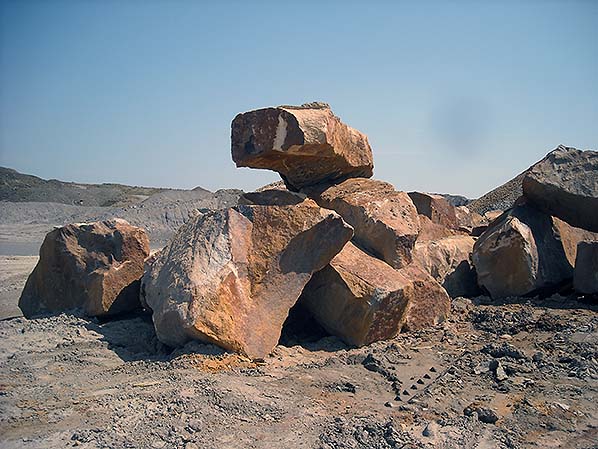
Britannia Quarries, on the moors above the old Rochdale – Bacup railway, used to dispatch huge quantities of stone for carriage by that line. Since 2010 the moribund quarries have been revived by Fairhurst Stone Merchants. These huge blocks of sandstone, seen in May 2016, are one of the products of the quarries. They are, of course, removed by lorries today.
Photo by Alan Young 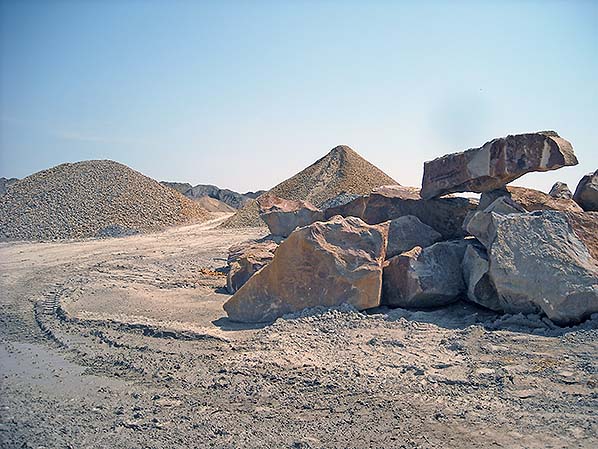 Britannia Quarries, on the moors above the old Rochdale – Bacup railway, used to dispatch huge quantities of stone for carriage by that line. Since 2010 the moribund quarries have been revived by Fairhurst Stone Merchants. The huge blocks of sandstone and piles of chippings, seen here in May 2016, are among the products of these quarries. They are, of course, all removed by lorries today. Britannia Quarries, on the moors above the old Rochdale – Bacup railway, used to dispatch huge quantities of stone for carriage by that line. Since 2010 the moribund quarries have been revived by Fairhurst Stone Merchants. The huge blocks of sandstone and piles of chippings, seen here in May 2016, are among the products of these quarries. They are, of course, all removed by lorries today.Photo by Alan Young 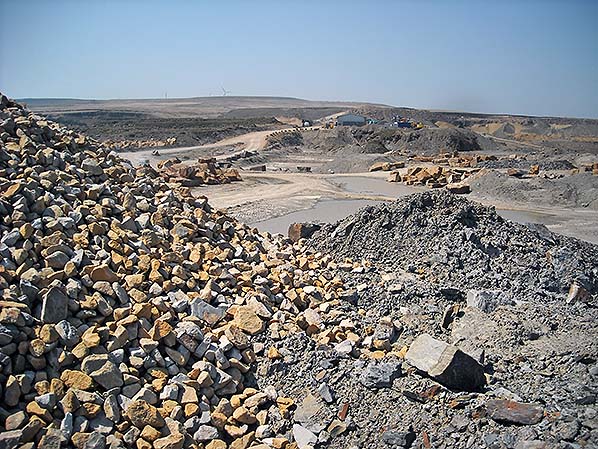 Britannia Quarries, on the moors above the old Rochdale – Bacup railway, used to dispatch huge quantities of stone for carriage by that line. Since 2010 the moribund quarries have been revived by Fairhurst Stone Merchants, but all the output today has to be removed by lorries. This view shows the quarries in May 2016. Britannia Quarries, on the moors above the old Rochdale – Bacup railway, used to dispatch huge quantities of stone for carriage by that line. Since 2010 the moribund quarries have been revived by Fairhurst Stone Merchants, but all the output today has to be removed by lorries. This view shows the quarries in May 2016.Photo by Alan Young
|
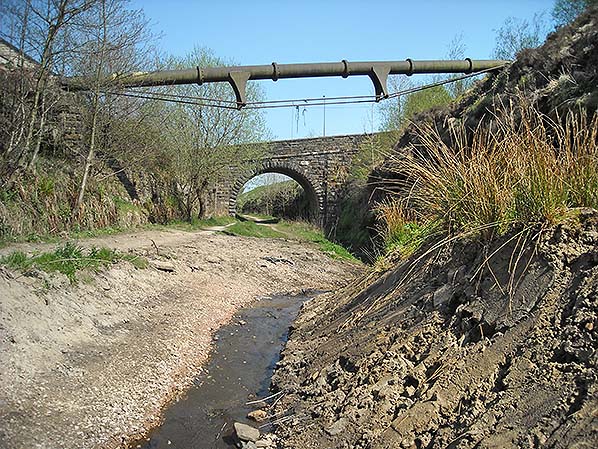 Looking east along the former Facit Branch towards Deansgreave Road bridge, near Britannia in May 2016. The modern footpath has been raised above the height of the old trackbed, and the stream provides drainage. The view is looking up the half-mile stretch at a gradient of 1 in 35 between Bacup (Newline) Tunnel and Britannia Stone Siding
Looking east along the former Facit Branch towards Deansgreave Road bridge, near Britannia in May 2016. The modern footpath has been raised above the height of the old trackbed, and the stream provides drainage. The view is looking up the half-mile stretch at a gradient of 1 in 35 between Bacup (Newline) Tunnel and Britannia Stone Siding
 Home Page
Home Page